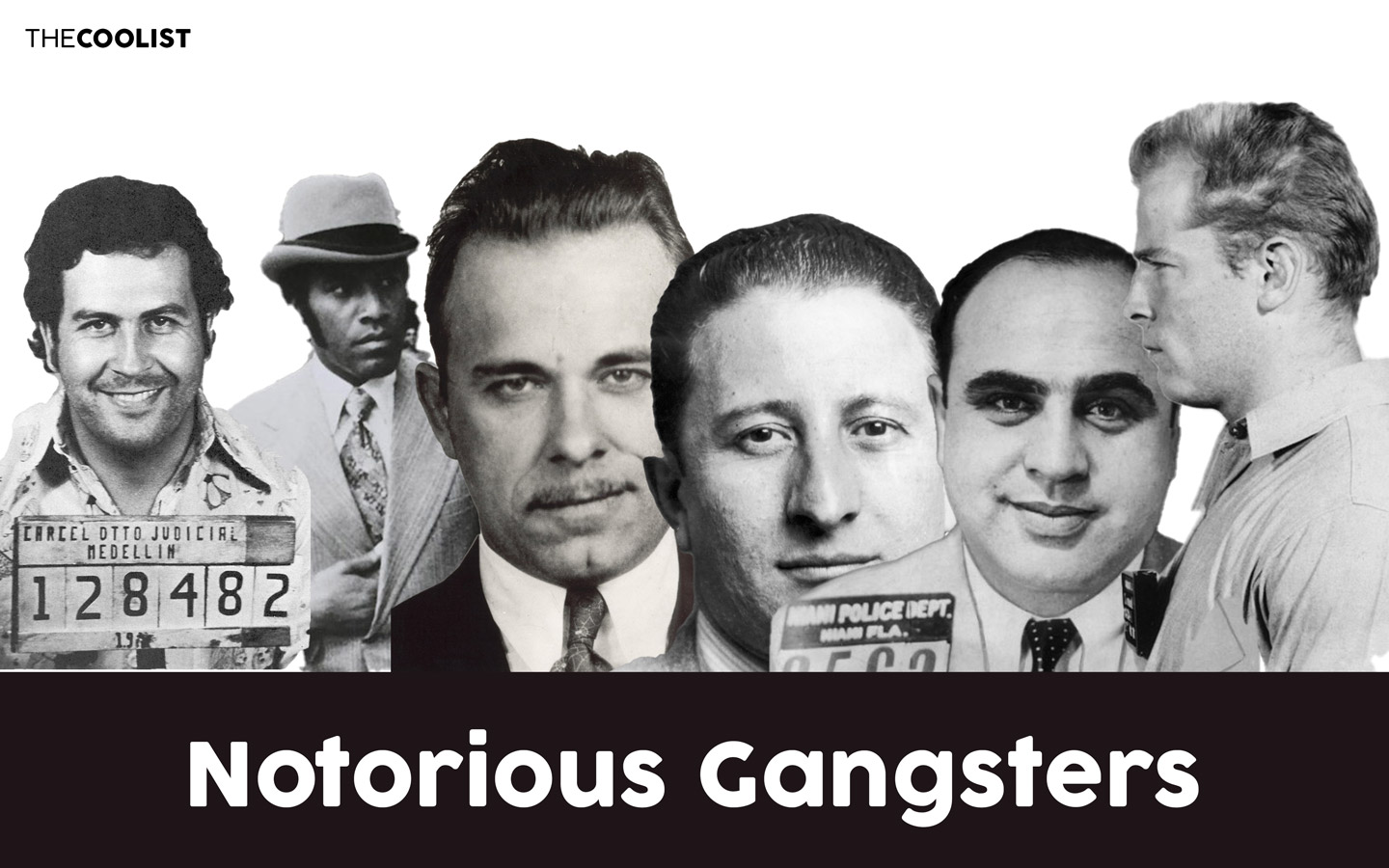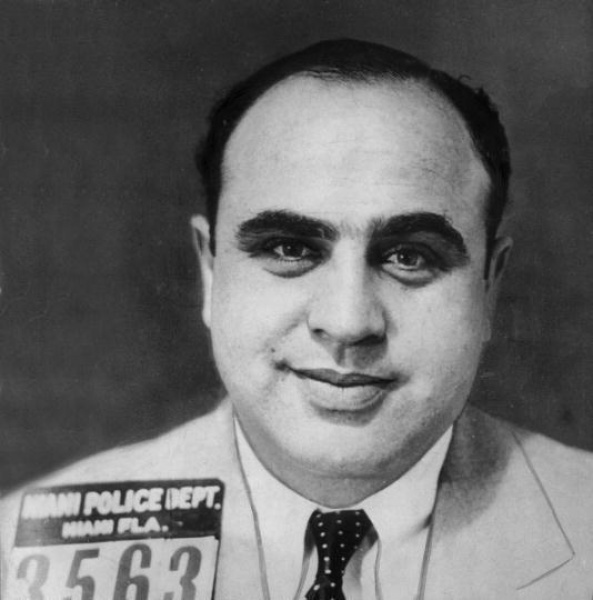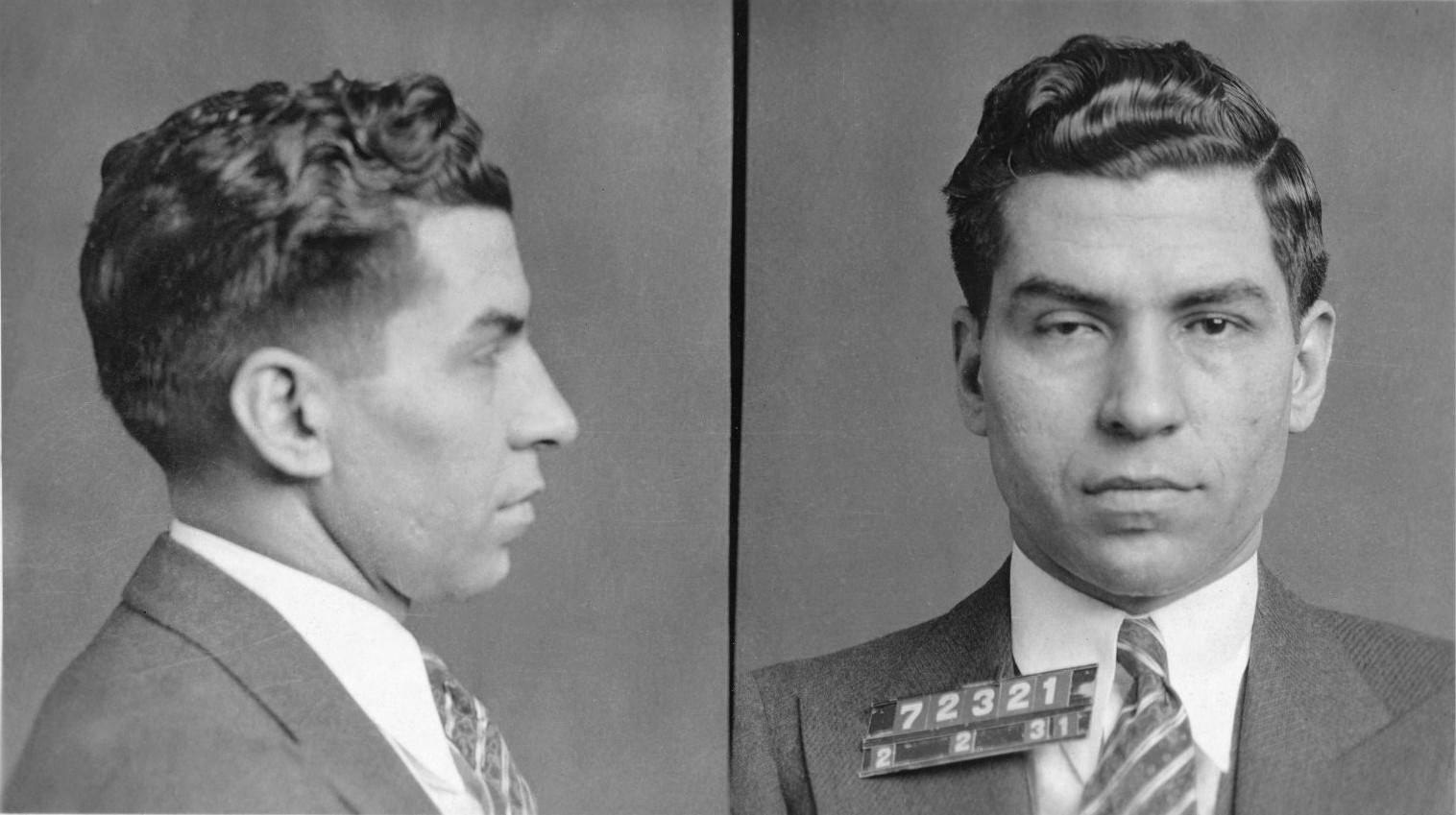When we talk about infamous gangsters, we're diving into a world that's both terrifying and fascinating. These are the figures who have left an indelible mark on the criminal underworld, shaping not just their own destinies but also the way society views organized crime. From the streets of Chicago to the back alleys of New York, these guys weren’t just about making a quick buck—they were building empires, and often, their names became synonymous with fear and power. So, buckle up, because we’re about to take a deep dive into the shadowy world of some of the most notorious gangsters in history.
Now, you might be thinking, why are we so captivated by these criminals? Is it the allure of danger, the seductive pull of forbidden power, or just plain old human curiosity? Whatever the reason, the stories of these infamous gangsters have become legendary, told and retold in books, movies, and even video games. But let’s not forget, behind every story, there’s a harsh reality—a reality filled with blood, betrayal, and broken lives.
So, whether you're here for the history, the drama, or just to understand the darker side of human ambition, we’ve got you covered. In this article, we'll explore the lives, crimes, and legacies of some of the most infamous gangsters in history. But remember, this isn’t just entertainment; it’s a look into how crime can shape entire communities and even nations.
Read also:Who Is Tyria Moore Unveiling The Star Beyond The Spotlight
Table of Contents
- Biography of Infamous Gangsters
- Early Lives and Influences
- Rise to Power
- Building Their Crime Empire
- Famous Crimes and Heists
- Downfall and Legacy
- Representation in Media
- Impact on Society
- Modern-Day Infamous Gangsters
- Conclusion
Biography of Infamous Gangsters
Before we dive into the gritty details, let’s take a moment to understand who these infamous gangsters really were. Below is a quick snapshot of some of the most notorious figures in the world of organized crime.
Biographical Data
| Name | Birthdate | Place of Birth | Known For |
|---|---|---|---|
| Al Capone | January 17, 1899 | Brooklyn, New York | Bootlegging, Prohibition Era |
| Bugs Moran | February 20, 1891 | New York City, New York | Rival of Al Capone |
| John Gotti | October 27, 1940 | South Bronx, New York | “The Teflon Don” |
| Pablo Escobar | December 1, 1949 | Rionegro, Colombia | Cocaine Kingpin |
These are just a few of the many infamous gangsters whose stories have left an indelible mark on history. But what shaped them? Let’s take a closer look.
Early Lives and Influences
Every great criminal has a backstory, and for many infamous gangsters, their early lives were anything but glamorous. Poverty, family strife, and a lack of opportunities often played a significant role in shaping their futures. Let’s explore how these factors influenced some of the most notorious criminals.
Al Capone: From Brooklyn to Chicago
Al Capone, one of the most infamous gangsters of all time, was born in Brooklyn, New York, to Italian immigrant parents. Growing up in a tough neighborhood, Capone quickly learned the value of street smarts. His early brushes with the law were minor, but they set the stage for what was to come. By the time he reached his twenties, Capone had moved to Chicago, where he would build one of the most powerful crime syndicates in American history.
Capone’s rise was fueled by the opportunities presented by Prohibition. With alcohol banned, there was a massive demand for illegal liquor, and Capone was more than happy to supply it. His influence extended far beyond bootlegging, though, as he dabbled in everything from gambling to prostitution.
Rise to Power
For any gangster, rising to the top wasn’t just about being the toughest guy on the block. It was about building alliances, eliminating rivals, and expanding their influence. Let’s take a look at how some of these infamous gangsters climbed the criminal ladder.
Read also:Revolutionizing Connectivity The Ultimate Guide To Iot Remote Control Platform
John Gotti: The Teflon Don
John Gotti, known as “The Teflon Don,” was a master of manipulation and intimidation. He rose to power in the Gambino crime family, eventually becoming its boss. Gotti was notorious for his flamboyant lifestyle and his ability to evade conviction—hence the nickname “Teflon.”
Despite numerous arrests, Gotti managed to avoid prison for years, thanks to his clever legal strategies and the fear he instilled in witnesses. However, his reign came to an end when an insider turned against him, leading to his eventual conviction and imprisonment.
Building Their Crime Empire
Once at the top, these gangsters didn’t rest on their laurels. They built vast empires that spanned entire cities, even countries. But how did they do it? Let’s explore the strategies and tactics that made their operations so successful.
Pablo Escobar: The Cocaine Kingpin
Pablo Escobar, the infamous Colombian drug lord, built an empire that was unparalleled in the world of organized crime. At the height of his power, Escobar’s Medellín Cartel was responsible for smuggling 80% of the world’s cocaine into the United States.
Escobar’s rise was marked by violence and corruption. He bribed officials, intimidated rivals, and even waged war against the Colombian government. Despite his brutal methods, Escobar was also known for his Robin Hood-like tactics, often distributing wealth to the poor in his hometown.
Famous Crimes and Heists
Of course, no discussion of infamous gangsters would be complete without mentioning their most famous crimes. These were the events that cemented their legacies in the annals of criminal history.
The Saint Valentine’s Day Massacre
One of the most infamous crimes in American history, the Saint Valentine’s Day Massacre, was orchestrated by none other than Al Capone. On February 14, 1929, seven members of Bugs Moran’s gang were gunned down in a Chicago garage. The massacre was Capone’s attempt to eliminate his rival, but Moran himself narrowly escaped the attack.
This event brought national attention to Capone and the violence of the Prohibition era. It also marked the beginning of the end for Capone, as the public outcry led to increased pressure on law enforcement to bring him to justice.
Downfall and Legacy
As the saying goes, all good things must come to an end. For these infamous gangsters, their downfall was often as dramatic as their rise to power. Let’s explore how their legacies have endured long after their deaths.
Al Capone: The Taxman Cometh
Despite his power and influence, Al Capone’s downfall came not from a rival gang but from the IRS. In 1931, Capone was convicted of tax evasion and sentenced to 11 years in prison. His health declined rapidly during his incarceration, and he was released in 1939, suffering from syphilis and dementia.
Capone’s legacy, however, lives on. He remains one of the most iconic figures in American crime history, a symbol of the excesses and dangers of the Prohibition era.
Representation in Media
From movies to TV shows, the stories of infamous gangsters have been retold countless times. These portrayals often romanticize their lives, turning them into anti-heroes who capture the public’s imagination.
“The Godfather” and Beyond
Perhaps the most famous portrayal of organized crime is in Francis Ford Coppola’s “The Godfather” trilogy. While the characters in the films are fictional, they are heavily inspired by real-life gangsters. The movies explore themes of power, family, and loyalty, offering a nuanced view of the criminal world.
But it’s not just movies; TV shows like “Boardwalk Empire” and “The Sopranos” have also contributed to the ongoing fascination with gangsters. These productions often blend fact and fiction, creating compelling narratives that keep audiences hooked.
Impact on Society
The impact of infamous gangsters extends far beyond their criminal activities. They have influenced everything from fashion to politics, leaving a lasting mark on the world.
The Fashion of Crime
Many gangsters were known for their flashy lifestyles, and their style has influenced fashion trends for decades. Think of Al Capone’s pinstripe suits or John Gotti’s silk ties. These men weren’t just criminals; they were trendsetters in their own right.
But the impact goes deeper than just fashion. The influence of organized crime on politics and law enforcement is a topic of ongoing debate. Some argue that gangsters have corrupted systems, while others believe they have exposed weaknesses that needed addressing.
Modern-Day Infamous Gangsters
While the era of Al Capone and John Gotti may be long gone, organized crime continues to thrive in the modern world. Today’s gangsters operate in a globalized environment, using technology and international networks to expand their reach.
The Digital Age of Crime
With the rise of the internet, modern gangsters have new tools at their disposal. Cybercrime, human trafficking, and online fraud are just a few of the ways that organized crime has adapted to the digital age. These criminals may not wear pinstripe suits, but their impact is no less significant.
Conclusion
In conclusion, the world of infamous gangsters is one of both intrigue and horror. These figures have left an indelible mark on history, shaping the way we view crime and its impact on society. From Al Capone to Pablo Escobar, their stories are a testament to the complexities of human ambition and the darker side of power.
So, the next time you watch a movie or read a book about a gangster, remember that these stories are more than just entertainment. They’re a reflection of the world we live in, with all its complexities and contradictions. And if you’ve enjoyed this article, why not share it with a friend? Or leave a comment and let us know your thoughts on the world of infamous gangsters.
Remember, the story doesn’t end here. There’s always more to discover, more to learn, and more to explore. Keep digging, keep questioning, and keep uncovering the truth behind the legends.


